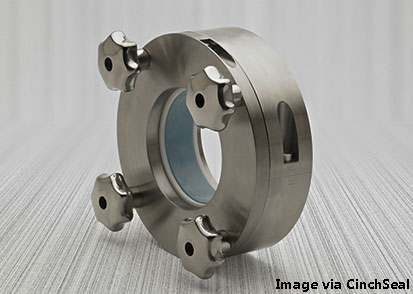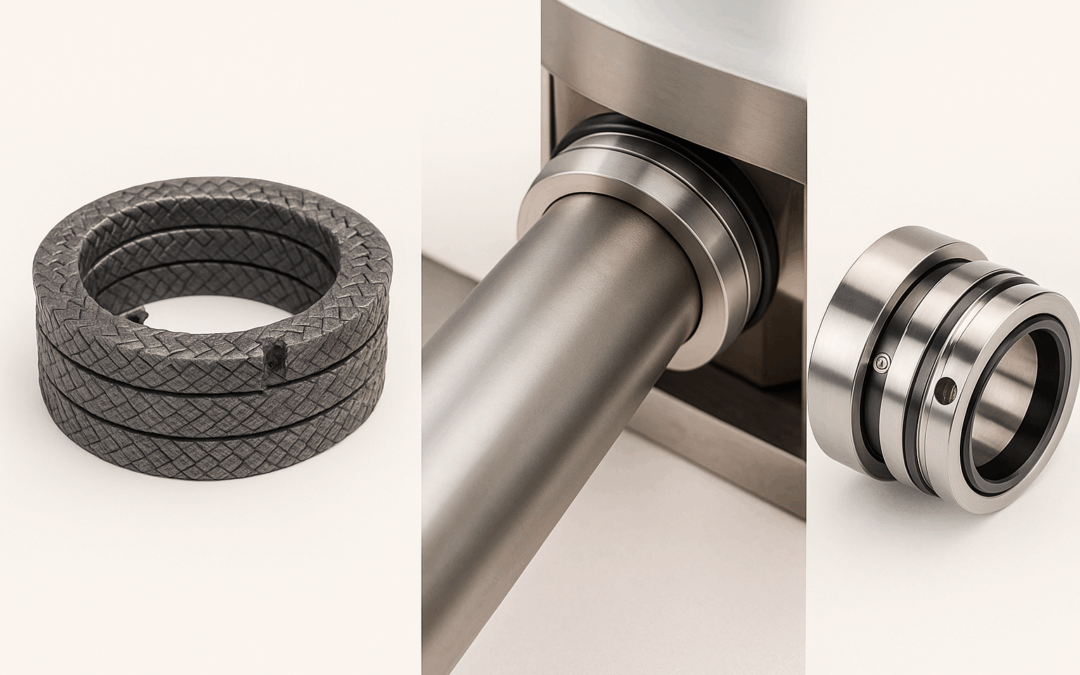The introduction of air seals has transformed the overall sealing technology. It has moved from the old unreliable methods to almost a perfect, new method. This is also a development that has helped end-users to enjoy a significant reduction in operational costs of their installed machines.
Before the advent of air seals, there used to be a high maintenance need, which also attracted high costs. The adoption of air seals has mitigated this requirement. As a matter of fact, they require neither maintenance nor flushing. This brings a reduction to the overall operational costs of the respective companies.
Where does an Air Seal fit in?
For sealing dry powders and solid handling machines, air seals are the best option anyone can think of. It can equally go beyond powder and solid and be used in wet applications. Examples of such are agitators, hydro pulpers, and slurry pumps. If you have previously used in-face, air purge seals, packing or any other traditional sealing option, you will realize that dry powder handling machines are pretty difficult to seal. Known problems associated with the above traditional methods include:
• The sealing elements contacting the products. Such contact is bad because it leads to easy wear of the components that the seals are made of. Also, it negatively affects the functionalities of the machine shaft.
• Product loss is often associated with traditional sealing solutions. The fine nature of some products such as powder makes it very difficult for a method like packing or in-face solutions to effectively keep the products from seeping out. This type of loss has now become completely preventable if you choose air seals. One clear example of these powdered products is flour or bread. Using traditional sealing methods can cause flour mills or bread industries to lose a significant portion of their powdered products through leakages.
• High operational cost is one other downside of sticking to traditional methods. The fact that the products are slowly leaking is a loss on its own. It means you can’t deliver 100 percent of the contents or close to that. Also, easy wear out of the machines due to contact with products attracts additional costs. When the machine needs servicing, repair, or a total overhaul, doing so comes at a high cost. All these directly amount to additional operational costs.
Beyond that, there are more challenges that when looked at, you will gladly bid farewell to when utilizing old sealing methods. If the vessel you are to seal is fabricated, it will likely be difficult to sustain packing. Of course, they need to be mounted against the vessel’s wall. This will not be easy at all if the wall is perpendicular to the shaft. Putting all of this into context, a new option that is free from these hassles is certainly ideal. That new option is an air seal.
Air Seals Will Save You Stress
An air seal does not require Maintenance. It does not have contact with the product. And it will be a long time before you need to think of a replacement. It is built to accommodate as much as 1.5 degrees of misalignment. In difficult conditions such as when the vessel’s wall is perpendicular to the shaft, the designing of the air seal will help it to hold and seal effectively.
Installing Air Seals
Air seals come in distinct configurations. These could be either solid or split configurations. I should say that the designers have an easy installation in mind because they are generally easy to install. To effectively install air seals, a spacer is needed to help dictate the gap between the shaft and seal housing. By default, air seals come with floating throttles so no adjustment is needed for that, in the course of installation or after.
Auxiliary hardware as well as adequate air supply is needed to complete the installation. To ensure that the machine is set properly, the system has to be predicated on air. It has to be turned on at least a minute before the product is introduced to the machine.
How Air Seals Work
A boundary layer of air is created at a point between the throttle and the shaft. This helps to reduce possible damages that would happen due to mechanical runout because the throttle also floats on the boundary layer. This is done by controlling the internal pressure profile circumference.
Generally, air seals make use of directional flow paths and engineering clearance to form uniform pressure and velocity profiles that create a pneumatic seal. Because of the inherent misalignment, which often occurs in many cases where the application of this technology is needed, the said floating throttle is used. It has the ability to handle 0.0625 inches parallel and 1.5 degrees of misalignment.
As earlier stated, no maintenance is required. The continuous airflow is what the machine needs to always stay clean and sound. The structure of the machine does not allow products to gain entrance into it especially the throttle area. This effectively removes the need for maintenance. Also, the materials used in making the machine are the type that will not harbor corrosion and doesn’t wear out.
Nevertheless, there can be an occasional system upset. If by any mistake, the product enters into it, disassembling the seal won’t be difficult at all. Anybody who can follow the installation procedure correctly can easily disassemble a seal, clean it, and reassemble it. One situation that can encourage products entering the seal is if the supply air is turned off during operation.
If this happens when the product has already been introduced, there is a chance that it might enter. If this happens, the internal air passageway will get clogged. It can also become disrupted and this will further lead to uniformity of the pressure profile.
Nobody wants to attract unnecessary loss to their company. Traditional sealing systems were seen to be good in the past. Today, air seals are known to be a better option. Using air seals will save costs and help industries to deliver more efficient services.




